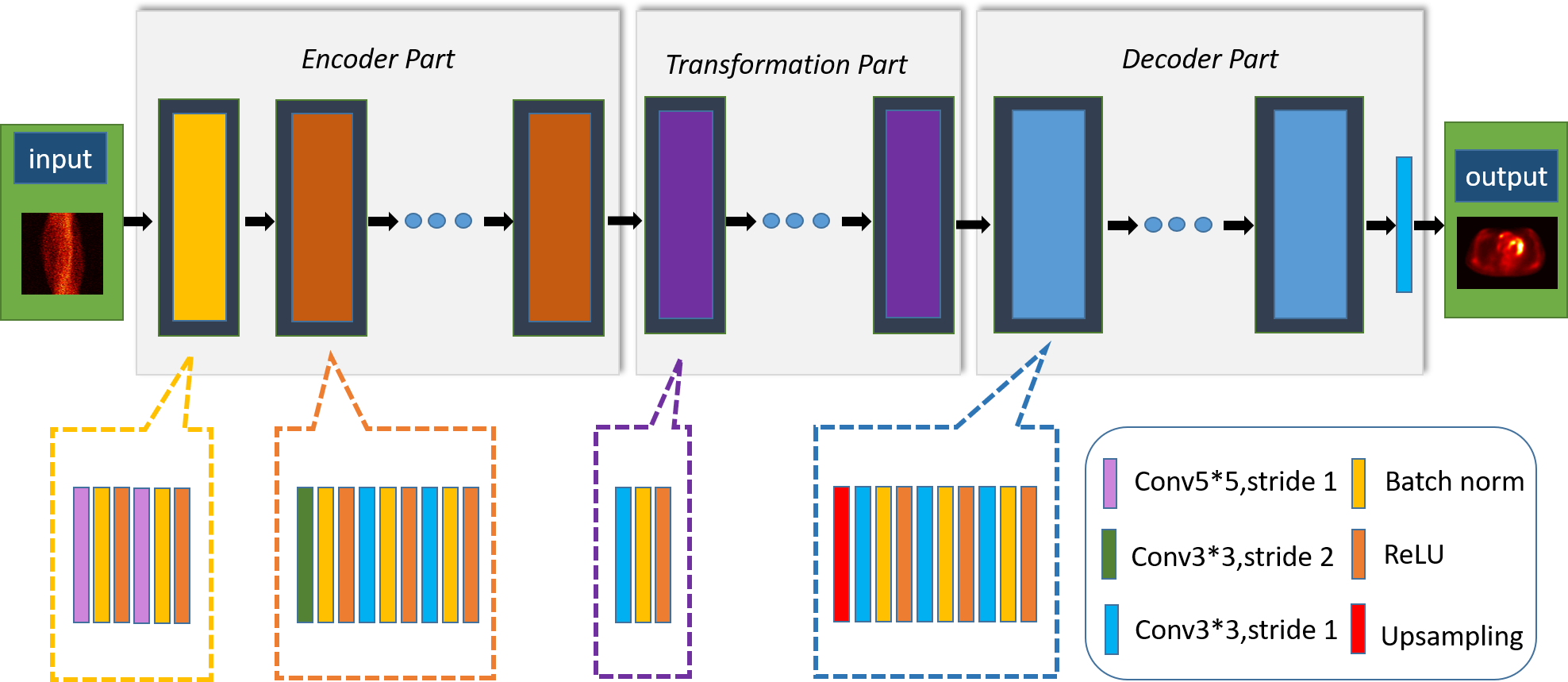Researchers Propose Direct PET Image Reconstruction Based on WGAN Network
Date:26-05-2020 | 【Print】 【close】
Positron emission tomography (PET) is an advanced medical imaging technique has been widely used in various clinical applications, such as tumor detection and neurologic disorders.
Reducing the radiotracer dose is desirable in PET imaging because it decreases the patient’s radiation exposure. However, reducing the dose can also increase the noise, affecting the image quality.
Researchers from the Shenzhen Institutes of Advanced Technology (SIAT) of the Chinese Academy of Sciences developed a direct PET image reconstruction network (DPIR-Net) by using an improved Wasserstein generative adversarial network (WGAN) framework to enhance image quality. The study was published in IEEE Transactions on Radiation and Plasma Medical Sciences, May 19.
This study focused on two main features. First, the network used sinogram data as input and outputs high-quality PET images direct, resulted in shorter reconstruction times compared with the traditional model-based reconstruction networks. Second, the team combined perceptual loss, mean square error, and the Wasserstein distance as the loss function, which effectively solved the problem of excessive smoothness and loss of detailed information in the traditional network image reconstruction.
Through the comparative study, researchers compared the proposed DPIR-Net method with the current popular methods included maximum-likelihood expectation-maximization (MLEM) with a post-Gaussian filter, total variation (TV)-norm regularization, nonlocal means (NLM) denoising method, neural network denoising method and traditional deep learning PET reconstruction network, the results demonstrated that the proposed method could quickly reconstruct and obtain high-quality reconstructed images from low-dose PET sinogram data and produce finer image details than other methods.
More significantly, from patient and mouse data evaluation, the quantitative and qualitative results showed that the proposed method outperformed the conventional methods either.
For the next step, researchers will explored the combination of WGAN network with more complex generators and the effects of different loss functions.

The generator of the proposed DPIR-Net framework consists of 35 convolutional layers. (Image by SIAT)
Media Contact:
ZHANG Xiaomin
Email: xm.zhang@siat.ac.cn